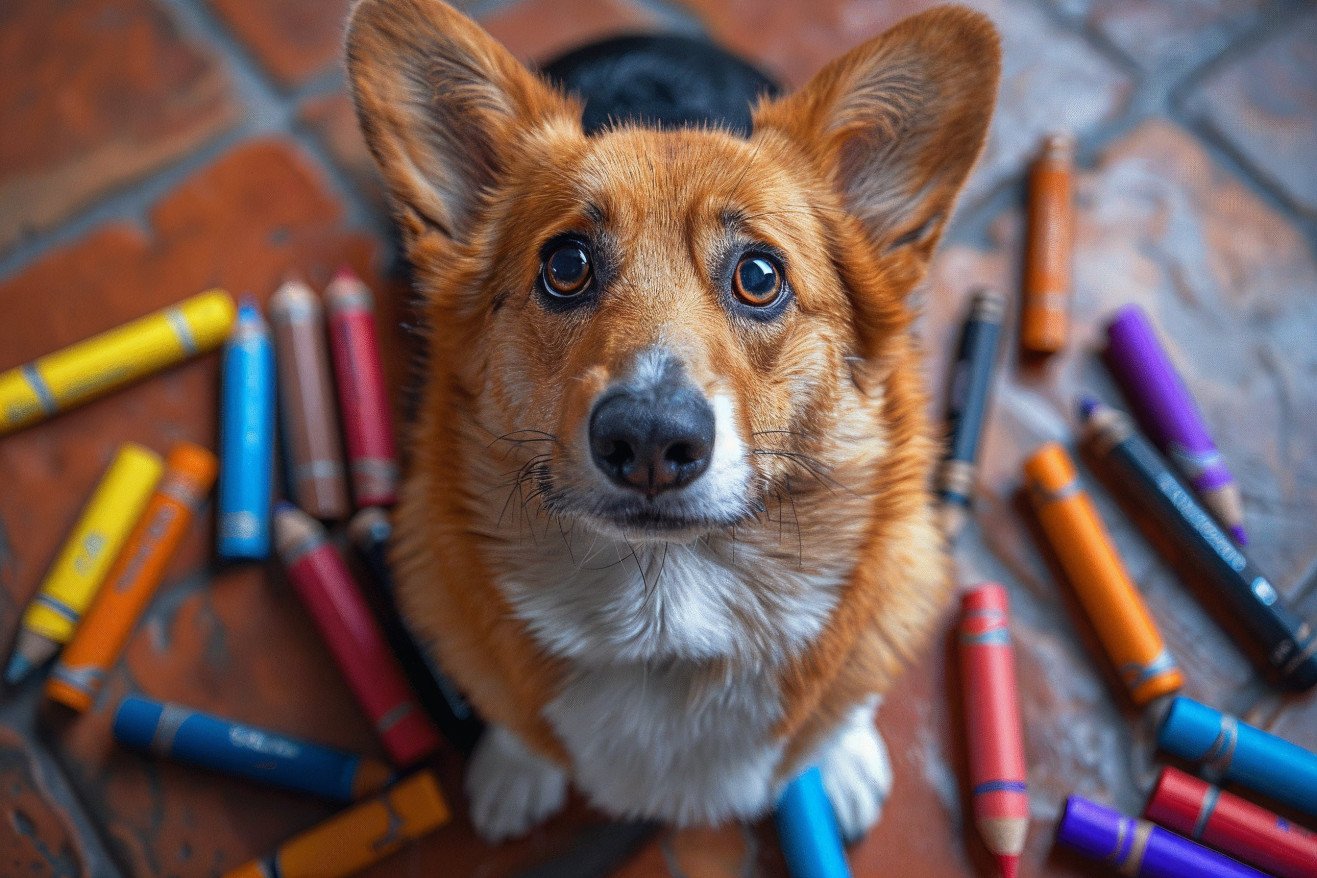Can Dogs Eat Crayons? What You Need to Know
29 May 2024 • Updated 28 May 2024

If you’re a dog owner, you may have found yourself asking this question due to the fact that your dog ate a crayon. While crayons aren’t toxic to dogs, they do contain non-toxic wax and coloring materials that can lead to some mild gastrointestinal distress if your dog eats enough of them. That said, in small amounts, the only side effect you’re likely to notice is some colorful poop.
In this article, we’ll use information from medical journals and veterinary toxicology experts to look at the specific ingredients in crayons to see if there’s any cause for concern when it comes to your dog eating them. This way, you can feel more confident if you’re worried and better prepared to take action if your dog does eat a crayon.
Are crayons toxic to dogs?
What Are Crayons Made Of? A Look at the Ingredients
The main ingredients in crayons are paraffin wax and pigments, both of which are generally safe and non-toxic for dogs. For example, a popular brand like Crayola does not use any of the most common allergens, including milk, nuts, or latex in their products. In addition, the Art and Creative Materials Institute (ACMI) tests art supplies and gives their Approved Product (AP) seal to products that are non-toxic under normal use.
That said, while crayons are generally safe, pets can be more sensitive to certain art supplies than people due to differences between species. This is why it’s important to know what’s in crayons so you can determine the potential danger and take the right steps to protect your pet. After all, even non-toxic products can be dangerous if they are consumed in large amounts by small dogs. This is why it’s important to be an educated pet owner so you can make sure your pet stays safe while you’re being creative.
Potential Health Effects and Symptoms
If a dog eats crayons, they may have mild gastrointestinal symptoms like vomiting, diarrhea, and abdominal pain, according to Dogster. While crayons are often excreted by dogs without any issues, they can lead to intestinal blockage, especially if a dog eats a lot of them, according to Hepper. However, it's important to watch out for more serious symptoms like loss of appetite, difficulty breathing, or lethargy.
In addition, if your dog eats crayons often, it could be a sign of an underlying condition called pica, which you should discuss with your vet. The response on JustAnswer also notes that the size of the dog and the amount of crayon they ate will determine the potential risks.
How to Keep Your Dog From Eating Crayons
Like many other potential hazards, preventing dogs from eating crayons starts with pet-proofing your home. According to The Canine Master, it's important to keep floors, counters, and other surfaces free of things that dogs can get into, including art supplies. In addition to this, securing trash cans and storage areas can help keep dogs away from crayons. The Canine Master also suggests using baby gates or playpens to keep dogs away from things that could be dangerous.
Training is also important when it comes to preventing dogs from eating non-food items. As mentioned by The Dog People by Rover.com, training dogs to avoid chewing on and eating crayons and rewarding them for good behavior around art supplies can help prevent them from eating crayons. This is especially important for puppies and dogs that are known to eat things they shouldn't.
While crayons are relatively nontoxic, eating a large amount can still be dangerous. By being proactive and pet-proofing your home and training your dog to avoid eating crayons, you can help ensure that your furry friend stays safe from the potential hazards of crayons.
First Aid and Veterinary Treatment for Crayon Consumption
In the event of crayon consumption, the first aid measures recommended by Hepper include watching for symptoms such as vomiting, diarrhea, or abdominal pain and feeding the dog a bland diet of boiled chicken and rice. The JustAnswer response suggests that if vomiting or diarrhea continues for more than 24 hours or if the dog starts to show signs of lethargy or an inability to keep food or water down, then it's time to consult a vet.
Veterinary care may involve supportive care, anti-nausea medication, or, in extreme cases, surgery to remove an obstruction, according to Hepper. It's important to make sure to provide the vet with information about the type and number of crayons the dog consumed and any symptoms that have occurred to ensure that the dog is treated properly. The JustAnswer response stresses the importance of seeking veterinary care immediately, especially if a large number of crayons have been consumed, especially by a small dog.
Although crayons are not very toxic, it's still important to make sure you take the right steps to protect your dog's health and well-being if they decide to eat some crayons.
Conclusion: How to Protect Your Dog
Although crayons are not typically very toxic, they can still be dangerous if a dog eats a lot of them. It's important to know what's in crayons, what the potential health effects are, and what symptoms to look for. In addition, taking steps to pet-proof your home and train your dog can help prevent crayon ingestion.
If your dog does eat crayons, you may need to seek veterinary care, especially if your dog shows any concerning symptoms. By being aware and taking the right precautions, you can make sure your dog stays safe when you're being creative.


